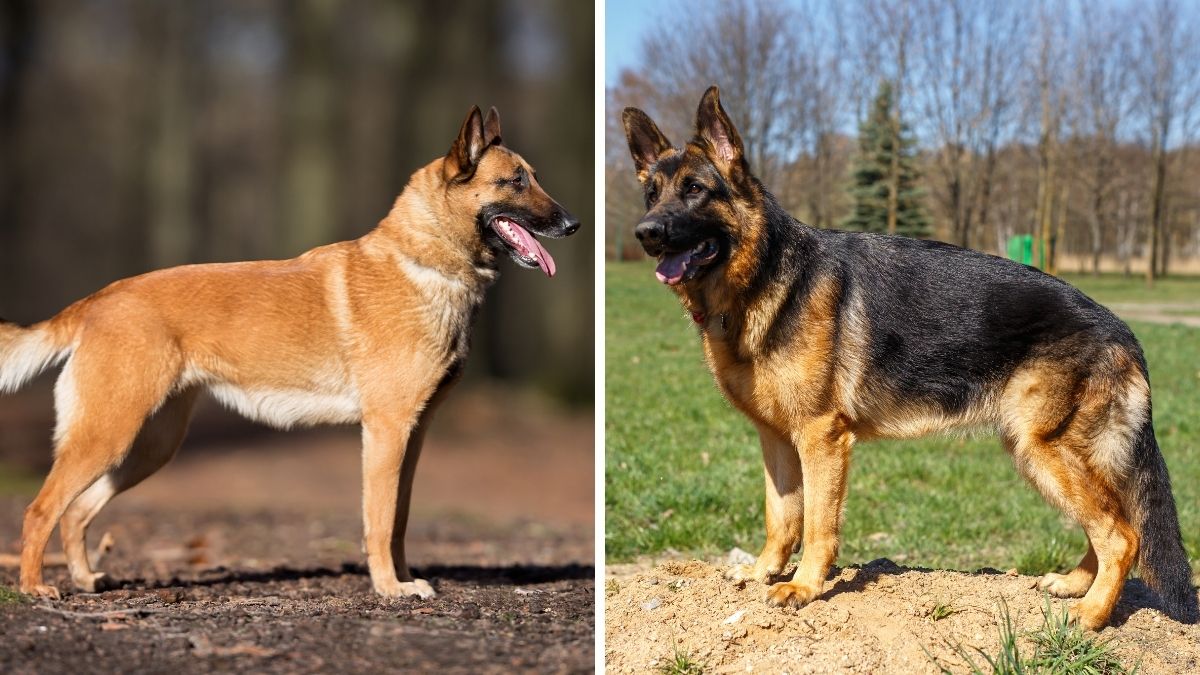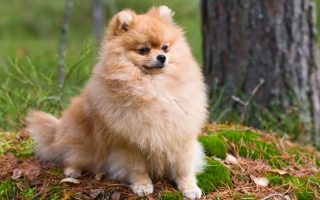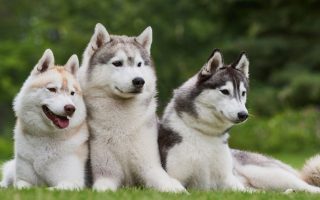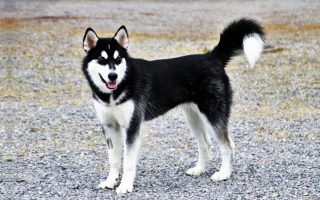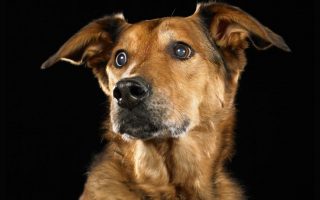It’s a common mistake for people to go past a dog and say “oh, that’s a German Shepherd” when it is a Belgian Malinois.
The German Shepherd Dog is more popular than its lookalike, so if you own the latter, you might have to explain over and over that no, your dog is not a GSD, thank you very much.
It is an understandable misconception, though. Comparing the Belgian Malinois vs German Shepherd, to any casual observer, they look the same.
One could swear they are cousins, or that the Malinois is a German Shepherd mix, at least. Neither is true.
The Belgian Malinois and the German Shepherd dog are two different breeds, each with their specific behaviors and even physical distinctions.
In this article, we would be comparing the German Shepherd with the Belgian Malinois to draw out their similarities and differences.
Belgian Malinois vs German Shepherd Side by Side – General Facts
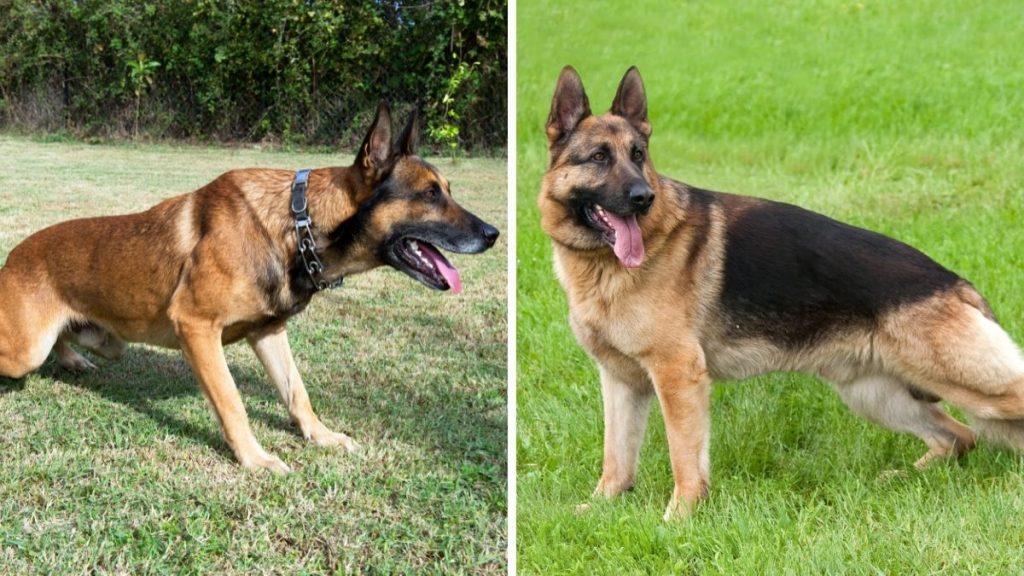
| Facts | German Shepherd | Belgian Malinois |
|---|---|---|
| Height | 22 to 26 inches | 22 to 26 inches |
| Weight | 50 to 90 pounds | 40 to 80 pounds |
| Coat Type | Double, dense, soft | Short, smooth |
| Coat Colors | Black, black and tan, gray | Fawn, mahogany |
| Temperament | Friendly, loyal, courageous | Passionate, confident, lively |
| Life expectancy | 10 to 14 years | 12 to 14 years |
| Trainability | High | High |
| Energy | High | High |
| Good first-time dogs | No | No |
| Good guard dogs | Yes | Yes |
| Good with kids | Yes | Yes |
| Good family dog | Yes | Yes |
| Good for apartment | No | No |
| Grooming need | Low | Low |
| Purpose | Herding | Herding |
Belgian Malinois Dog Breed – All You Should Know
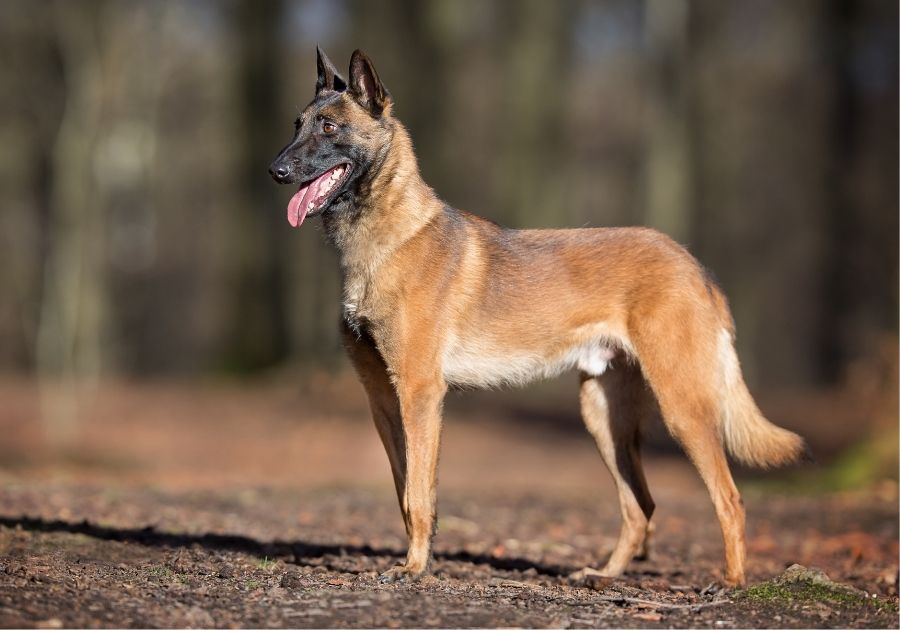
Belgian Malinois History and Origin
The Belgian Malinois was developed in Belgium in the late 1800s and was one of the four sheepdogs that originated in the country.
Others are the Tervuren, the Laekenois, and the Groenendael.
The United Kennel Club classifies all four under one breed. The American Kennel Club recognizes their autonomy but hasn’t yet registered the Laekenois.
As of 1891, the unanimous consensus was that all four sheepdogs were all under the Belgian Shepherd Dog breed.
It was that year the Belgian Shepherd Dog Club was formed, and the following year Professor Reul wrote the first Belgian Shepherd Dog’s standard.
In 1901, the Belgian Shepherd Dog was recognized as a breed by Belgium’s Kennel club, the Club du Chien de Berger Belge.
When the Belgian Shepherd Dog got into the United States, that was after the First World War—in which the Belgian Shepherd Dog participated.
By then, the Malinois and the Groenendael were the more popular varieties.
The AKC first recognized both under the breed “German Sheepdogs” in 1911 but soon changed it to “Belgian Sheepdog” in 1913. It took some more years before they got recognized as different breeds.
Belgian Malinois Appearance
The Belgian Malinois has perked, wolflike ears and usually has a fawn or mahogany coat.
The coat is short and smooth but sheds heavily. Completing its appearance is a bushy tail.
Malinois are medium to large dogs. The males are taller than the females, and they also weigh more.
A typical male Malinois gets to a height of 24 to 26 inches and weighs between 60 and 80 pounds. The female Malinois grows up to 22 to 24 inches and weighs between 40 and 60 pounds.
Belgian Malinois Personality
Confidence and a protective spirit are hallmarks of the Belgian Malinois. Its loyalty is reserved for family members. Strangers will face aloofness from this breed.
The Belgian Malinois is a good watchdog and guard dog, and it plays these roles without resorting to aggressiveness. The latter is a behavioral flaw.
The Belgian Malinois loves to work and thrives in an active household. It is good at many things besides herding and guarding.
It can participate in competitions and is a solid member of the K9 police unit.
As a pet, the Belgian Malinois should be exercised regularly. It isn’t recommended for first-timers, busy people, and couch potatoes.
Owning a Belgian Malinois requires a lot of commitment, and of course that comes with a reward.
German Shepherd Dog Breed – All You Should Know
German Shepherd History and Origin
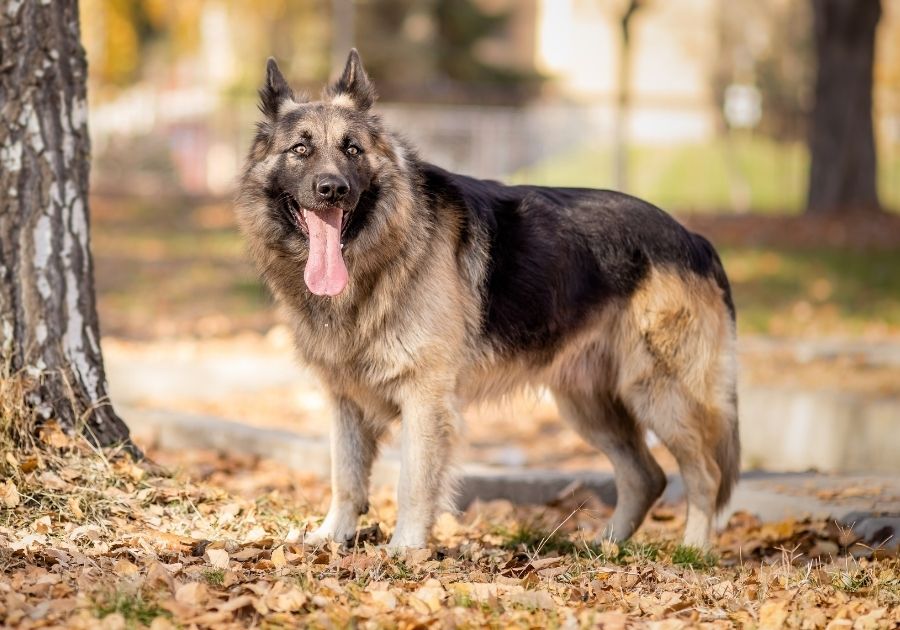
As the name shows, the German Shepherd came from Germany and is a new breed, when compared to other dogs.
It was developed in the 19th century by a man named Max von Stephanitz, a captain in the German Calvary.
His goal was to initially develop an excellent herding dog, but as Germany got into its industrial age, he changed course for the German Shepherd and got the breed into military service.
The German Shepherd participated in the First World War as a messenger, guard, rescuer, sentry, supply carrier, and even a Red Cross dog.
It was during this war that the German Shepherd caught the fancy of Americans.
The soldiers realized how much of an asset the GSD is, and they got home with many.
The years after the First World War saw a lot of Anti-Germany sentiments, so though people loved the German Shepherd, they weren’t comfortable with its roots.
In 1917, the American Kennel Club decided to name this breed the Shepherd Dog while the Kennel Club of England changed the name to the Alsatian Wolf Dog.
They both reverted to the old name in 1931 and 1977 respectively. Many still call the German Shepherd the Alsatian Dog today.
German Shepherd Appearance
The German Shepherd Dog looks like a tame wolf if you think about it. Its perky ears and common black and tan coat give it that wolfish vibes.
It also comes in other colors like gray, black and red, blue, and even white. It has a double coat that sheds a lot but isn’t hard to groom.
This breed is a big one, with the males being more in height than the females.
The male German Shepherd grows up to 24 to 26 inches, while the female German Shepherd gets to 22 to 24 inches. Their weight range falls between 50 and 90 pounds.
German Shepherd Personality
The German Shepherd is an introvert by nature. It doesn’t feel the need to cozy up to strangers and might even be aloof towards them.
It takes time for a GSD to consider you a friend, but once it does you’re sure to have a loyal buddy for life.
Some people think the German Shepherd is aggressive, but it only gets that way if it feels threatened or you try to harm its loved ones.
Good socialization will stop it from fear-based aggression, which it can be prone to.
While German Shepherds make good guard dogs and watchdogs, they will not appreciate being kept outdoors and alone.
They love being around family members and are prone to separation anxiety if left alone for a long time. They need regular exercise as well because of their high energy.
Belgian Malinois vs German Shepherd: Top 11 Differences
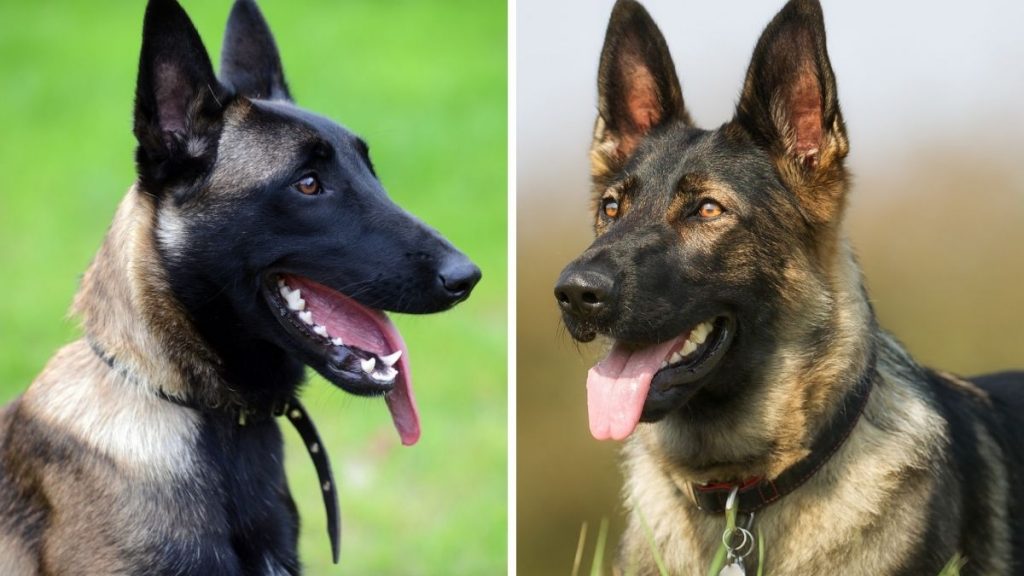
It is time to lay it all out on the table. Both breeds have a herding background and they have similar personalities. In modern times, they are excellent guardians in their homes.
But, what are the differences between these two similar breeds?
There are some differences between Belgian Malinois and German Shepherd in size, temperament, coat type and color, and lifespan.
These differences are subtle, but they are there. Let’s compare both breeds using 11 categories.
Size: Which is Bigger Belgian Malinois or German Shepherd?
The German Shepherd weighs more than the Belgian Malinois, but there isn’t any significant height difference.
Both the GSD and the Malinois grow up to 22 to 26 inches.
In weight, the German Shepherd falls between 50 and 90 pounds while the Belgian Malinois falls between 40 to 80 pounds. That’s a considerable 10-pound difference.
The difference in weight is usually because of the coat form of the German Shepherd (which we will look into soon).
The Belgian Malinois appears sleek in form and is considered faster than the German Shepherd.
Appearance
Both breeds look the same to any observer. They have pointed ears, a long snout, and calm eyes.
It is because of the appearance that the Belgian Malinois is often mistaken for the more popular German Shepherd, or some would classify it as a German Shepherd mix.
The difference is in the details. The German Shepherd’s ears have pointy tips while the Belgian Malinois’ ears are simply triangular.
The German Shepherd has a fluffier tail than the Belgian Malinois.
Both dogs are muscular and athletic, but the Malinois is more built for speed while the GSD might endure better.
Coat Type
The coat difference is more overt, and as we hinted above, the coat type influences the difference in weight.
The German Shepherd has longer hair than the Belgian Malinois, and even the short-haired GSD still has more fur.
Their coats are both double, but the GSD wears its own like a cardigan. The German Shepherd’s coat is wiry to the touch, unlike the Malinois’ coat which is smooth.
Both breeds are high shedders, so neither is considered hypoallergenic. The shedding aside, they are easy to groom.
You’ll need to take care of it more during those moments, but apart from that regular doggy hygiene is enough for them.
It is easy to spot the difference between both breeds using the coat as a criterion.
The breed with hair that’s very short is the Belgian Malinois, and by running your hand through its coat you can tell which breed you’re looking at.
The German Shepherd’s hair will feel rougher.
Coat Color
If the coat and other physical attributes aren’t enough to tell the difference, the coat color is another determining factor.
The German Shepherd has a variety of colors like black and tan, gray, black and red, liver, blue, sable, and white.
The Belgian Malinois is usually fawn and mahogany which comes off as brownish or red.
The Malinois also has a black mask with black ears, but that’s not always the case with the GSD.
Because the color patterns aren’t uniform, it can still be hard to tell both breeds apart.
This especially occurs when the Malinois and the GSD have brown coats. In this case, the Malinois is usually a golden brown while the GSD takes a redder shade.
The German Shepherd usually combines two colors, the Belgian Malinois is often with a solid color.
The GSD can also have a solid color, but it is often darker than the Malinois.
It is not uncommon to see a solid black German Shepherd coat, but there is hardly a black Belgian Malinois.
Temperament and Behavior
The German Shepherd and the Belgian Malinois are also similar in personality, most likely because of their herding background.
Both breeds are loyal, protective, intelligent, and highly active.
Dignified and courageous, the German Shepherd and the Belgian Malinois both strut around with the confidence of excellent guards.
They also tend to be aloof towards strangers, so don’t expect either of them to warm up to people they don’t know until after some time.
Having said that, they have some unique personality traits that tell them apart.
The Belgian Malinois is usually more intense than the GSD, so much that it is humorously termed the “German Shepherd on steroids”.
This means the Malinois needs more work and doesn’t know when to stop.
It requires more exercise as well, about 2 hours a day while the German Shepherd is okay with an hour or an hour and 30 minutes of activities.
Both GSD and Malinois love the company of their families, but the latter tends to show more independence.
If you’re a busy person, the Belgian Malinois may tolerate your absence better than the German Shepherd, which tends to be a velcro dog.
Intelligence and Training
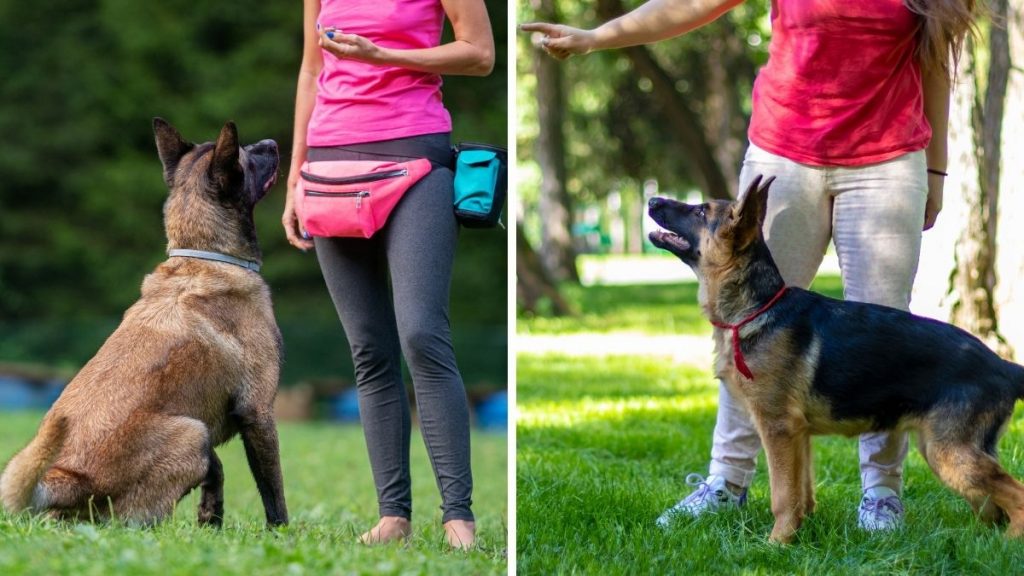
The German Shepherd and Belgian Malinois are both intelligent breeds.
When you consider the three types of dog intelligence, both breeds do well in instinctive and adaptive intelligence.
They play their roles well and can learn from experience.
In work and obedience, however, the German Shepherd has an upper hand. They are obedient and trainable, and the only challenge you might have is their high energy level.
The Belgian Malinois is usually more stubborn during training, so you would have a harder time.
Both breeds are not suitable for first-time pet parents, however. They need experienced owners to train them well.
Bite Force
The German Shepherd is notorious for using its mouth more than the Belgian Malinois, and it is more likely to bite or nip someone.
Not surprisingly, the German Shepherd has a stronger bite force.
The bite force of a dog is measured in pounds per square inch (PSI), and any dog with a stronger bite force can inflict more damage.
The German Shepherd has a bite force of 238 psi while the Belgian Malinois has a bite force of 195 psi.
The bite of the GSD is enough to break a bone, but this doesn’t mean the Malinois can’t inflict damage. Owners of either breed should take responsibility for both.
Guard Duties
The Belgian Malinois and German Shepherd both make excellent guard dogs, but their operating methods differ.
German Shepherds are known to be more aggressive when threatened and will not hesitate to attack a perceived intruder. The Belgian Malinois stays more on the defensive.
If you compare both breeds, the German Shepherd is more dangerous.
It is considered the third most dangerous breed in the world, and if left untrained can become a terror. Fortunately, the GSD is trainable.
The Malinois can also be aggressive towards people, but not at the same rate as the GSD.
Its aggression is often directed towards other dogs and pets. The Belgian Malinois is best suited for a family that needs only one pet.
Family Duties
The German Shepherd and the Belgian Malinois are both good family dogs and are kid-friendly, especially when they are well trained and socialized.
That said, the GSD is often rougher and more exuberant when playing with kids and is best suited for grown children.
You may not have that problem with the Belgian Malinois, but it also nips at heels. You should train both breeds to reduce this behavior.
Health and Lifespan
Both breeds are healthy breeds, but the Belgian Malinois tends to be healthier and has a longer lifespan.
The German Shepherd’s lifespan falls between 10 and 14 years while the Belgian Malinois life expectancy falls between 12 and 14. Some even live up to 16 years.
The Belgian Malinois is predisposed to illnesses like hip and elbow dysplasia, Progressive Retinal Atrophy, epilepsy, hypothyroidism, allergies, and bloating.
In comparison, the GSD has more health issues.
Hip and elbow dysplasias can plague this breed, alongside illnesses like diabetes, von Willebrand’s disease, degenerative myopathy, epilepsy, exocrine pancreatic insufficiency, and bloat.
Purpose
Both German Shepherds and Belgian Malinois were bred to be herders, and they did good jobs at it.
They also served as guards and were both instrumental in the 1st World War.
Nowadays both still act as guards and are household companions, but they also play other roles like being in the police force.
The GSD is more popular in the K9 Unit, but the Malinois is also considered a good candidate for the work.
Which is smarter Belgian Malinois or German Shepherd?
Both the Belgian Malinois and German Shepherd are smart dog breeds, but the Malinois is harder to train because of its stubbornness.
Which is stronger German Shepherd or Belgian Malinois?
The German Shepherd has more weight than the Belgian Malinois and is considered the stronger one. The GSD is also more aggressive and has a stronger bite force.
Are Belgian Malinois replacing German Shepherds?
Because of their resemblance, some people see the Belgian Malinois as a suitable alternative to the German Shepherd. However, the GSD still retains its popularity.
Belgian Malinois vs German Shepherd: The Verdict
Belgian Malinois and German Shepherd both have their strengths and weaknesses.
Objectively, one cannot be said to be better than the other. You are the one to choose which you prefer as a pet for your household.
You should also consider your environment and lifestyle to know which fits better.

